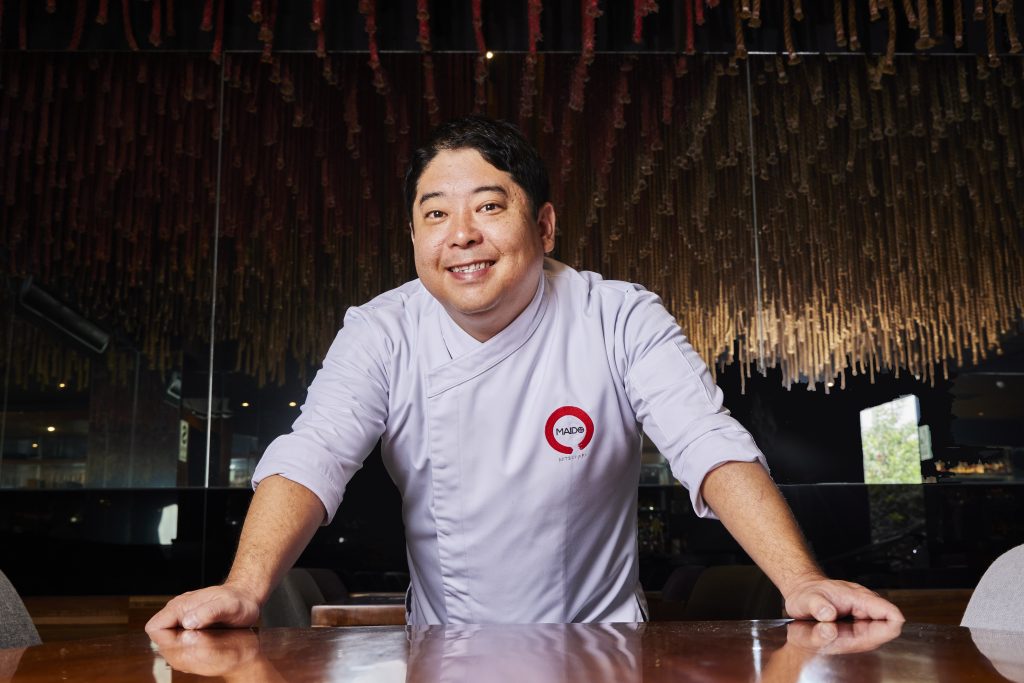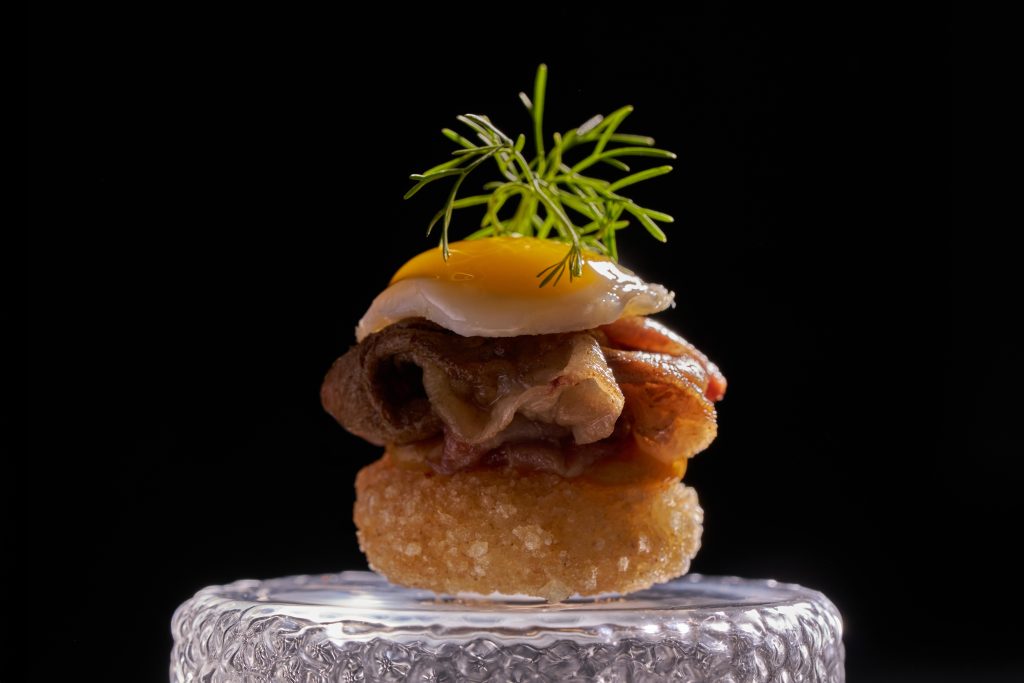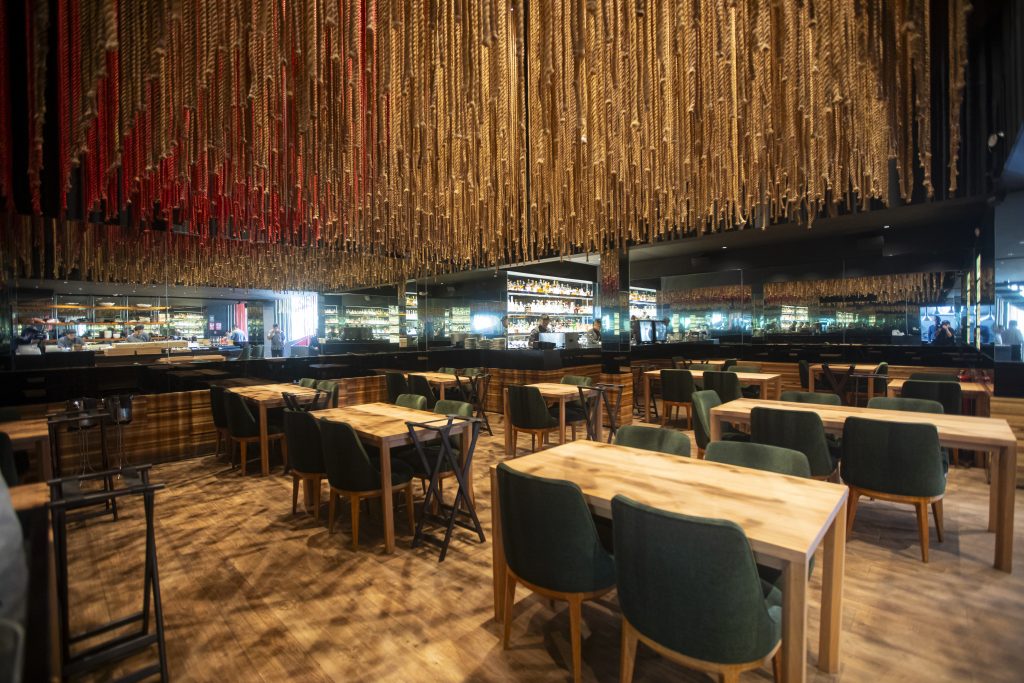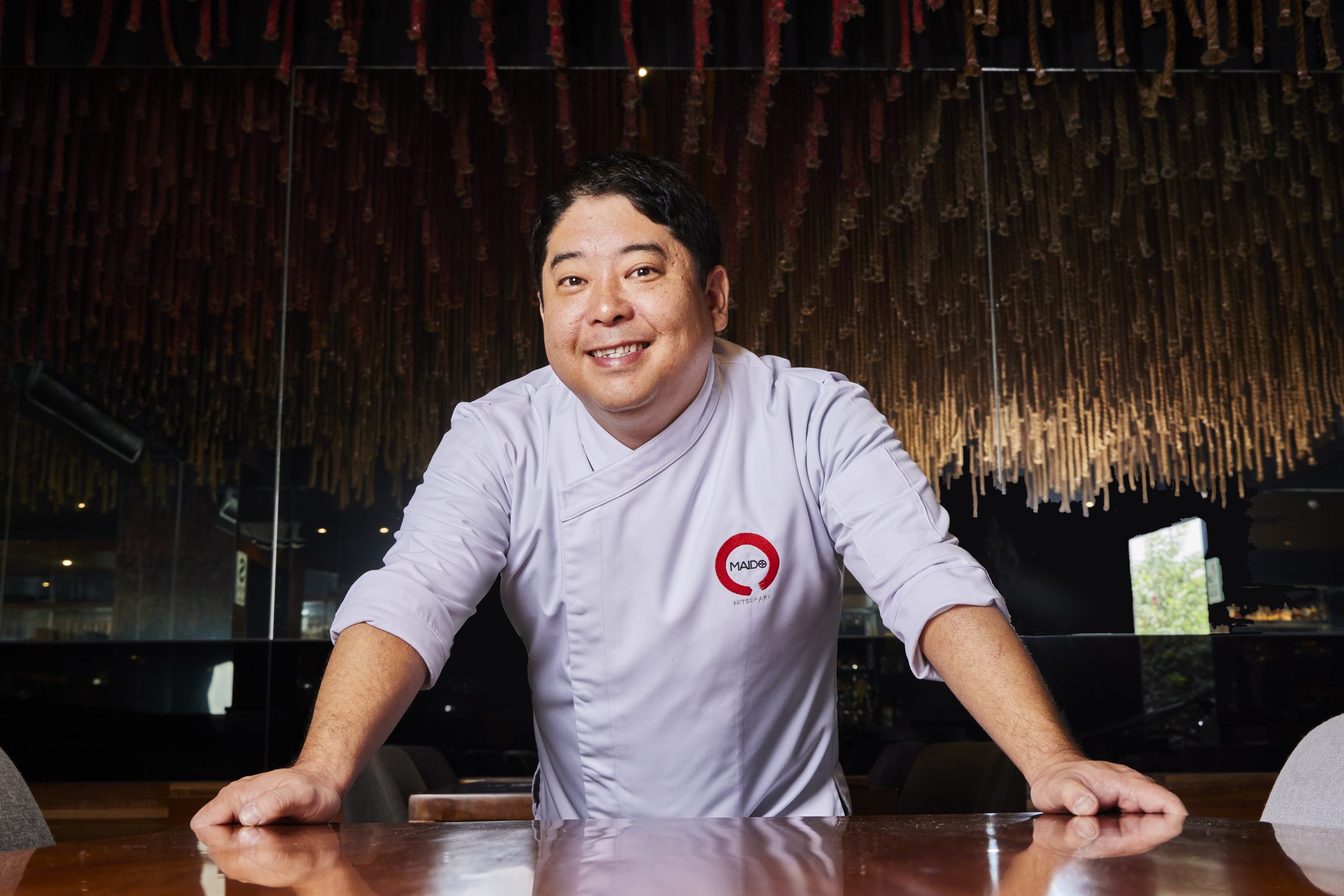Born and raised in Peru of a Japanese ancestry that was fully integrated into his upbringing, Mitsuharu Tsumura’s culinary path was fixed to bring together the best of both his worlds. Meals prepared by his mother at home were creole, a mix of Japanese and Peruvian, while his father insisted on eating only the former. This Nikkei amalgamation was the norm for Micha – as he’s more fondly known as – as he grew up in Lima. Once he’d honed his skills in professional kitchens in the US and Japan, it was inevitable that when the opportunity arose to plate his interpretations of his homeland and that of his parent’s that Micha’s Restaurante Maido would bring together ingredients, techniques, flavours and dishes from both sides of the Pacific.

November 2024 saw Maido celebrate its 15th anniversary, a notable landmark that was celebrated by Micha and his team throwing the foodie fiesta of the decade that was attended by 1,500 of Micha’s closest friends from around the world. Adored by colleagues for his fun and generous nature, and revered by gourmands who make the pilgrimage to Peru specifically for Maido’s masterful menu, Micha’s Miraflores-based restaurant has been winning awards and receiving accolades and recognition for years now.
Book a table (well in advance, you’ve been warned), walk upstairs to the first floor, and be greeted by a hearty greeting “maido” by the whole team – the concerted bellow is a friendly way of saying welcome. Take a seat under the tributary rope installation that hangs down from the ceiling, its red and white hues representing the colours of both of Micha’s flags – and let one of the world’s tastiest tasting menus commence.
Born into two worlds
As a child, Micha’s two worlds of Peru and Japan came together every mealtime; the very inspiration behind Maido is all the chef has ever known. It should be mentioned that both Japanese and Chinese migrations to Lima around the turn of the 20th century were precipitated by the port city’s Pacific location, and so there has been long been a tradition of eating Nikkei and chifa, cuisines inspired respectively by each culture, in the Peruvian capital.
“I would eat aji de gallina (yellow chilli chicken) with Japanese rice, not with rice buoyed by garlic and oil like we do in Peru. People would come around for dinner and ask ‘why do you eat this Peruvian classic with this type of rice?’ In Nikkei homes in Peru, one way or another, shoyu and miso are present in the preparations of day-to-day in creole Japanese cuisine. There was always a bit of a mix on our dining table, whether they were gyozas, raw fish or Japanese rice, and next to all that, there would be a lomo saltado (classic Peruvian beef dish). That mix was always a bit crazy for some people!”
Micha found his passion for gastronomy at a young age and, supported by his family, studied for four years in the US in Providence, Rhode Island, dividing his time equally between culinary arts and food service management. Then came real world schooling that clearly isn’t for the weak: culinary training in Osaka, Japan. At Imo To Daikon, Micha honed his izakaya skills but it was at Seto Sushi where he learned the most. “I also worked at the Sheraton hotel until I was promoted to become food and beverage manager; I think it’s important for cooks to have some administration skills too.
“In Japan, however, the most important lesson I learnt was to take care of and respect products, which has given its life, many times, to feed us. And the best way to respect it is by treating it and cooking it in the best way, right? That was a key lesson, along with the perseverance and patience that goes hand in hand with Japan,” he says.
From a corner in Miraflores, one of Lima’s most well-heeled – and food-forward – neighbourhoods, Micha opened Maido in 2009, an upscale Japanese restaurant with a sushi bar; you can still order nigiri, maki and hand rolls a la carte today. Over the years, Maido’s Nikkei identity has become much more prominent, pioneering the bridging flavours, ingredients and techniques from both sides of the Pacific Ocean. Many dishes use Peru’s signature chilli pepper, the yellow ají amarillo, used in a lightly spicy creamy sauce that’s a welcome addition to almost any fish dish.
“We made the connections little by little,” he says. “Maido started out as more of a Japanese cuisine, with a touch of Nikkei, but I fell increasingly more in love with Peru, travelling through its diverse regions from the northwest, the Amazonian region and the Andes, which meant I would start introducing new products to the kitchen. Apart from that, it also formed part of my essence, it was core to what I ate as a child. So step by step, we created our own world.
“Within Peru, I travel a lot to the north coast to Piura and Chiclayo, to the south in Arequipa, and to the Amazon and the jungle to Tarapoto and Madre de Dios, which are gateway cities to the Amazon; I increasingly like to work with Amazonian river fish and produce. Some Peruvian ingredients that are really exciting – always – are chilli peppers because they are the DNA of Peruvian cuisine.”
Team work
It’s fair to say that the Peruvian culinary community has been particularly gifted in joining forces to show their impressive skills to the world. But clearly no restaurant can survive if it doesn’t tick the taste boxes – along with top-notch service, flawless dishes, creative wine pairings and solid spirit lists – and one of Micha’s most endearing skills is creating loyal teams who remain with him.
Sommelier Florencia Reyes has led the wine programme for 10 years, while maître Juan Janampa Torres (her husband) directs front of house. Sous chef Akira Shiroma is now Micha’s business partner in Maido as well as in Tori Pollería chicken eatery, while pastry chef Dalila Sifuenes Arevalo started at Maido just a few months after it opened in 2009. Reyes has picked up numerous accolades for her beverage pairings that include sakes and non-alcoholic harmonisations, and is widely lauded as one of Latin America’s finest wine connoisseurs. In a post-pandemic world, service took an about turn when the front-of-house team began expressing greater apparent joyfulness with their passion for service; a more relaxed and smily take, which never compromised the seamless service, was fully appreciated. And of course there are Micha’s longstanding business partners Marjorie Flores and Cesar Choy.
During a short speech of gratitude that he gave at the anniversary party, Micha touched on the importance of human sustainability, further evidence about his capacity to build teams. “We always worry about the issue of environmental sustainability, but people do everything, at the end of the day,” he says. “I think that maintaining relationships and building bonds, not only in Peru but in Latin America and around the world, with people who think like you and work as a team, always has good results. To be able, in one way or another, to exchange knowledge and forge friendships because that’s what nourishes you every day. I think that the kitchen (besides the fact that it can be competitive) has to be a vehicle that always unites us and doesn’t separate us.
“And if I think back over 15 years of Maido, what we’ve really achieved is to create a wonderful community of cooks, friends and clients.”

The greatest hits
Besides throwing an epic anniversary party, Micha decided to pay tribute to the various tasting menus he and his team have created over the years. “Putting Nikkei cuisine on the global map has been our most important achievement,” he says. And it paid off, getting Maido in front of so many diners: on 19 June 2025, Maido was chosen the best restaurant in the world by World’s 50 Best.
While some chefs prefer to close the chapter and never return to a recipe – and understandably so, because it’s rather like the Rolling Stones trotting out Satisfaction every night – Micha chose to take some of his greatest hits and remix them to give a fresh take on 2024, a contemplated evolution which, for diners fortunate enough to dine at Maido over the years, is a riveting experience that taps into one’s sensorial memory, both visually and buccally. At the end of service, diners are given a pack of photos, each dish dating back to its year of inception, printed out to complete the rite of passage.
“For last year’s anniversary, we took emblematic and signature dishes of the past 15 years, one per year, and reinvented them,” says Micha, “such as the nigiri a lo pobre (see photo), the asado de tira short ribs that are cooked for 50 hours, and squid ramen.
In the case of nigiri a lo pobre, it was the first nigiri Micha made at Maido. “When we opened back in 2009, people would say, ‘I don’t eat sushi because I don’t eat raw fish or raw seafood’. So I decided to make sushi with meat and started using skirt steak, then we moved onto other cuts and today we use Wagyu 8+. The quail egg yolk has changed format over the years, while the sauce used to be separate but today it’s injected.”
“From that dish came the empapada sushi, the sweetbread sushi, the Peking duck sushi and the engawa, which is part of the tongue membrane that’s grilled over embers. We have had several cooked and meat sushis on the menu. Basically, this dish is sushi rice, thinly sliced meat, and topped with Wagyu and quail egg with ponzu; it’s one of the pieces I like the most in the restaurant to this day.
“As for the nigiri a lo pobre dish, it really has evolved over 15 years; it’s a game changer! It was my way of understanding that sushi was a tapa, that you can take practically any ingredient you want, put it on top of rice, and make a nigiri (and rather than maki, for example. It’s a beautiful story, because it’s the first sushi we made, and different, let’s say, from classic sushi that is more commonplace today and which you can see everywhere, but at that time, almost no one made nigiri.”
There’s an all-star constellation of greatest hits at Maido – such as the Amazon ramen and – but one other dish that has evolved over the years and made a welcome return to the anniversary menu is pez de sapo (Lusitanian toadfish) sandwich.
“In 2011, we started to make the sanguchito de pez de sapo, a fish that’s hard to source today but was more common then. We would make chicharrón, deep frying the fish in a light batter, then serving it in chimbombo bread, a sandwich typically eaten in the Callao port district. We gave it our twist by serving it on a bao (steamed bun), topped with salsa criolla and tartar sauce, and it was an instant hit that diners still ask for today. It’s truly evolved in a way that bears Creole, Japanese and even some Italian influence.”

No menu would be complete without a ceviche, Peru’s signature raw fish dish usually only served at lunchtime in cevecherías to ensure its maximum freshness. In this case, in 2014 Micha took oft-underappreciated limpets and gave them a new lease of life. “We added a leche de tigre ice cream powder to the ají amarillo, which melts in your mouth when you eat it,” he says. “This has also been remixed several times: trout raised on farms on Cerro de Pasco – the highest breeders in the world in Huancavelica – olive oil and served with a corn crisp and chulpe cancha (toasted corn kernels) is one alternative limpet ceviche.”
In his free time, Micha loves being with his family, hanging out with his parents and partner Mariana; he also has a dedicated karaoke room at home. “I go fishing a lot,” he says, “and I enjoy cooking for my friends.” Let’s hope that whoever is at the top of Micha’s phone contacts and gets the call to savour nigiri, sanguchitos and ramen whenever the award-winning chef – who put Nikkei cuisine on the world stage – is in the mood for a relaxed feast, knows how lucky they are.
Originally due to be published in Saisonnier Spring 2025, which has since closed.
